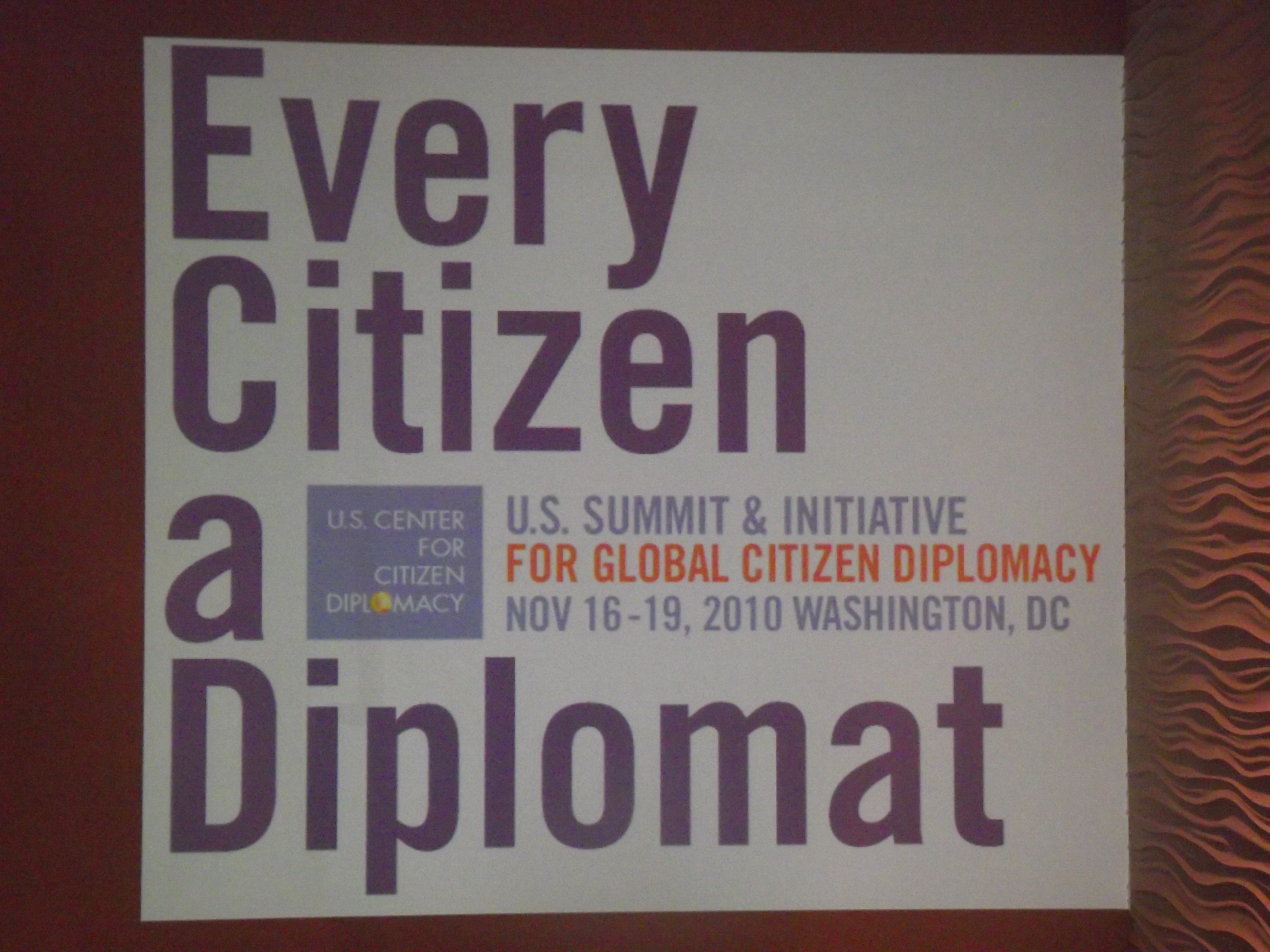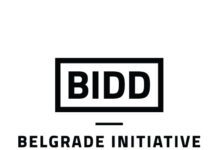By Carly Schmitt
 Food is one of the oldest forms of exchange. Our mutual dependence on food is often cited as the most basic element that connects people all over the world. Moreover, the various different processes of cooking and preparing things to eat are seen as an easily identifiable characteristic that sets us apart.[1]
Food is one of the oldest forms of exchange. Our mutual dependence on food is often cited as the most basic element that connects people all over the world. Moreover, the various different processes of cooking and preparing things to eat are seen as an easily identifiable characteristic that sets us apart.[1]
Many of the different conflicts and challenges we currently face on both local and international levels play themselves out in gastronomy. In the late 1990s the simple act of bringing people together was recognized as an art form. Since then, artists around the world have begun working with food as an artistic medium, because of the inherent abilities it has to bring people together. Contemporary artists are developing the ritual of sharing a meal into the basis for art. These projects use food as a foundation for intercultural exchange, and as an approachable way to encourage a conversation about larger, more challenging topics.
In this article I describe the current trends in contemporary public art to use food as an artistic medium that encourages intercultural exchange. I provide references to a range of projects going on within Europe and the United States that deal specifically with the idea of food as a tool for encouraging both local and international diplomacy. I provide detailed information about a variety of projects in order to illustrate the various forms these projects take on, as well as the variety of missions they are attempting to fulfill. Through the examination of these various artistic interventions, I hope to more clearly document the way in which this artistic trend is appearing in the contemporary art world, and how these art projects are helping to challenge and re-define the way in which artists interact with society.
In order to understand how food as a form of cultural diplomacy was able to enter into a conversation regarding contemporary art practice, let us first touch briefly on how the simple act of bringing people together has now been transformed into an act worthy of artistic merit.[2] This powerful trend in contemporary public art was termed “relational aesthetics” in the 1996 landmark text Esthétique relationnelle (Relational Aesthetics) by Nicolas Bourriaud. This text describes relational aesthetics as art that focuses on the social interactions between people as the genesis for an artwork. Bringing people together and creating a conversation, or interaction, are the main artistic objectives in this style of artistic practice. Bourriaud identifies this artistic trend as a product of a society that is overburdened with material possessions, and although better networked, still more isolated than ever before.
The most classic example of an artist working with both relational aesthetics and food is Rirkrit Tiravanija. Tiravanija is a New York-based artist of Thai descent who grew up in Argentina, Thailand, Canada, and Ethiopia. He is best known for his work involving installation as a way of creating a specific environment within which he cooks various types of food for visitors as a sort of performance.
In his 1992 work, “Untitled (Still),” presented at 303 Gallery, New York, Tiravanija moved everything from the gallery storeroom into the exhibition space. In the empty space of a storeroom, he created a makeshift kitchen and cooked Thai curries for gallery visitors. The goal of this work was to directly involve the viewer in the art process and establish a different sort of relationship between artist and audience.[3] In his performances, Tiravanija usually cooks Thai food, or some hybrid variation of it, and uses food to gather people together, inspire conversations, act as a symbol of home, and connect the audience to his personal history and culture.
Tiravanija’s way of working with food is very introspective and personal, and is conceived strongly as a way of challenging the conventional forms of displaying art in a gallery setting. Over the past 15 years, a new generation of artists have taken up the groundwork laid by relational artists like Tiravanija, and have begun working with food to create art that is more contextual and directly diplomatic in nature. These artists have adapted Bourriaud’s ideas and are no longer striving to create “ultimate utopias,” but are rather working to develop more manageable “micro-utopias” in, and outside, the gallery space.[4] Similar concepts are found in the life and work of Joseph Beuys, who through his work coined the term “social sculpture,” a mixture of creative actions that leads to a potential social transformation.[5] These artists are constructing their own concrete spaces and choreographing interactions with the hope that these gestures will activate what Mika Hannula calls the “social imaginary” in our communities and help us, as Bourriaud writes, “learn how to inhabit the world in a better way.”[6]
A good example of this is artist Michael Rakowitz. In 2007, he used food to create a critical dialogue in the United States around the war in Iraq with his project titled “Enemy Kitchen.” Rakowitz invited groups of students and adults to cook together and share a meal made from the recipes of his Jewish-Iraqi mother. Run like a workshop, Rakowitz used the time spent cooking together in the kitchen to talk about contemporary political issues. He did this with the intention of opening up a new dialogue around this conflict by using food as a mediating mechanism.
Rakowitz said that the practice of cooking and eating together “is a public act that enlists an audience as vital collaborators in the production of meaning.”[7] In holding cooking workshops like these in the context of the USA, and by using his mother’s recipes, he hoped to evoke what he describes as “the poetry inscribed in the notion of consuming the enemy.” In 2012, Rakowitz took this project one step further by creating an Enemy Kitchen food truck, based in his hometown of Chicago. An extension of the Enemy Kitchen project, Rakowitz’s artistic goals remain the same, but the format has evolved so that now local Iraqi cooks prepare the food while Iraq War veterans act as servers and sous-chefs. In conducting this project, Rakowitz came to realize how few people have contact with an Iraqi or soldier who served in the war. Increasing the mobility of this project has allowed the Enemy Kitchen to reach a broader public.[8]
Much scholarship has been done around the topic of how food acts as a defining marker of cultural identity, as well as a gateway to understanding cultural difference; among them are the works of anthropologists Mary Douglas, Herbert Blumer, and Claude Levi-Strauss.[9] In the global marketplace, food has become one of the most accessible ways of gaining access to other cultures. Through food, we can have the experience of encountering other cultures, often with the convenience of staying in our own country. Through food and this ritual of sharing a meal, one is suddenly extended an invitation into another culture. The consumer can feel knowledgeable, worldly, and perhaps even included in another cultural community, if only for the 45 minutes before the check arrives.[10] Projects like Enemy Kitchen, and the similar project Conflict Kitchen, rely heavily on the feelings of cultural inclusion and understanding that such diplomatic food actions can provoke.
Conflict Kitchen is an ongoing food-as-cultural-diplomacy project in Pittsburgh, Pennsylvania. This take-out restaurant only serves food from countries with which the United States currently is in conflict. Every six months, the menu and font design change to represent a new country and culture. In addition to serving food, Conflict Kitchen also hosts events, performances, and discussion about the culture, politics, and issues at stake with regard to each country that the project focuses on. The food comes in a specially designed wrapper that features interviews with representatives from the “conflict country” living both in the United States and back home. Thus far, Conflict Kitchen has served food from Iran, Afghanistan and Venezuela, with Cuba and North Korea to be featured within the next year. This project uses food to open up a conversation in the United States about foreign cultures and the issues of geopolitics.[11]
It is important to note that Conflict Kitchen acts and operates exactly like a fast-food restaurant. Participants pay for the privilege of sampling food from these unfamiliar cultures. This provokes the larger question: does a monetary exchange change the interaction and character of the diplomacy going on in this project?
Much scholarship has been done regarding the tradition of giving that often accompanies food.[12] When this tradition is broken and food is sold, rather than gifted, one could argue that the monetary exchange challenges the authenticity of the action, thus turning this form of cultural exchange into a spectacle.[13] In the book Cross Cultural Consumption: Global Markets, Local Realities, an article by Allison James goes into great depth about the way people are able to buy into or literally consume a culture as a way of measuring individual status or prestige.[14]
This phenomenon can be seen around the world. When McDonald’s opened their first restaurant in China in 1992, people stood outside in lines for hours, tripping over each other in their eagerness to taste “real American food.”[15] Most people do not consider McDonald’s to be an excellent example of “authentic American cuisine,” in fact, in terms of America’s culinary reputation worldwide, McDonald’s has done more damage than good. Moreover, in this example, it is important to recognize that the chance to have a “real American experience” was in some respects even more important than the quality of the food. In this example of consuming American culture, food exchange has clearly become a cultural spectacle and a way for customers to enrich, or confirm, their personal identities, as opposed to engaging in a more authentic cultural exchange.
The American Reputation Aid Society (ARAS) is an ongoing art project that deals directly with this question of cultural consumption and authenticity. Frustrated by the very unauthentic way American culture is represented around the world through fast food restaurants and Hollywood movies, artist Carly Schmitt developed a platform where people come together and discuss international politics on a more interpersonal level. Operating since 2010, ARAS, along with the ARAS Aid Wagon, has appeared in both Germany and the United States, staging “aid action” performances in farmers markets.
Schmitt constructed the ARAS Aid Wagon, a mobile kitchen modeled after an old-world pastry cart, out of mostly found materials that she uses as the basis for her interactions. A typical ARAS Aid Action, or performance, consists of Schmitt wheeling her wagon into the local community farmers market, buying local produce, and using the modest mobile kitchen to create home-cooked American food. Cooking up some of her favorite family recipes, or recipes submitted through the ARAS website, she uses food as an invitation for conversation and a chance at having a truly authentic American experience overseas. ARAS does not charge for this food, and makes all their recipes available on-site and online, so that a large portion of their aid mission is connected to education.[16]
ARAS uses food as a vehicle that delivers intercultural diplomacy and, like the two other previously mentioned projects, uses food as a way to make the process of globalization more approachable. The ARAS project is particularly noteworthy because the artistic actions are taking place in both Europe and the United States. Moreover, this project represents a second subsection of art projects that use food as a way to address domestic issues or practice a form or “domestic diplomacy.” Although not yet a completely developed concept, one could argue that it is the lack of domestic diplomacy that has led to the strong polarization within our own countries. These polarizations are inarguably tied directly to geography, regionalism, and xenophobia.
When ARAS operates in the U.S., their focus shifts inward, and they stage diplomatic actions that focus more on local issues, such as nationwide obesity, cooking healthy food on a small budget, the challenge of finding fresh produce in low-income areas, talking about the way food is grown and distributed domestically, and how that ties Americans into a larger global challenge. In the U.S., this project takes on a stronger “think global and act local” approach, and is purposely designed to get people talking about these important issues, and how they intersect with the concept of a “national identity.”
Robert Farid Karimi is an interdisciplinary playwright/ poet and performance artist who is also working on issues related to domestic diplomacy. In his project The Cooking Show con Karimi Comrades, Karimi has created a live, interactive cooking show infused with political satire and music. These shows are presented in a variety of contexts and locations, ranging from supermarket parking lots to the theatrical stage. His current show, Diabetes of Democracy, is working to promote cooking as a cultural movement that will combat the rising epidemic of type 2 diabetes in the U.S., which is predominately caused by obesity. In Arizona, his shows focused mainly on changing the eating habits of young Latinos, whose dietary choices are heavily influenced by both their cultural ancestry and the pressure to take on a more mainstream U.S.-American diet. Karimi himself is of Iranian-Guatemalan ancestry, and uses his familiarity with the first-generation immigrant community in the U.S. to create programs that strive to increase awareness around the links between food, cultural identity, and health.[17]
Through these shows, Karimi has found a creative way to use food, and food preparation, as an entry point into a larger conversation about domestic health issues and cultural identity. A group of international artists initiated a similar project in Leipzig, Germany, when they founded the Neue Leipzige Kuche (New Leipzig Kitchen) in 2009. Like Karimi, the Neue Leipzige Kuche also used their position as cultural outsiders to reach out to the new-immigrant communities living within Eastern Leipzig. This project brought people from Russia, Turkey, North America, South America, the Balkan Regions, and Germany together to cook with one another. Out of this collective action came new ways of cooking and understanding each other, which the artists hoped would lead to creating a new Leipzig identity. The Neue Leipzige Kuche also focused on health issues by initiating international food tastings, and starting a conversation about nutrition as it relates to different eating traditions.[18]
Food has achieved a mythical status in modern culture, and food has become the embodiment of our cultural differences. Often, people fail to recognize that food cultures are the resulting process of hundreds, if not thousands, of years of research and refinement. History plays the predominant role in what, when, and how we eat. Moreover, it is inaccurate to say that a specific style of eating is a product of nature or was simply born into a culture.[19] These different styles of preparing and eating food are in fact the end result of years of cultural diplomacy and experimentation. The art projects featured in this article strive to expand upon the history of cultural food diplomacy and use that confusing divide between nature and culture as a catalyst for a conversation about health, justice, and internationalism.
All of the projects I mentioned in this article use food as a platform for critical dialogue. In some cases, that dialogue is intended to showcase the story of globalization as it is told through food and culture on an international level. Other projects work to make international issues visible by focusing their efforts on local concerns. This article exemplifies a few artists who are working in a very contextual way to develop projects that challenge and re-define the way artists interact with society. These projects take place outside of a typical gallery setting, and use food as a platform for conducting cultural diplomacy regarding both national and international issues. Is it possible that these small diplomatic actions will be able to encourage larger international results? Only time will tell, but if Oscar Wilde’s optimistic words about the conciliatory power food carries are any indication, “After a good meal one can forgive anybody, even one’s relatives,” then projects like these have a good chance.
References and Notes
[1] Cox, Jay Ann. Eating the Other: Ethnicity and the Market for Authentic Mexican food in Tucson, Arizona. Diss. University of Arizona, 1993. Ann Arbor: UMI, 1993. Print.
[2] Kester, Grant H. Conversation Pieces. Berkeley: University of California Press. 2004. Print.
[3] Tiravanija, Rirkrit. Supermarket. Zurich: Art Data. 1999. Print. See also Saltz, Jerry. “A Short History of Rirkrit Tiravanija.” Art in America February 1996:106. Print.
[4] Bourriaud, Nicolas. Relational Aesthetics. Dijon: Le Presses du Réel, 1998. Print.
[5] Borer, Alain. The Essential Joseph Beuys. London: Thames and Hudson, 1996. Print.
[6] Hannula, Mika. The Politics of Small Gestures. Istanbul: Art-Ist Publications. 2006. Print.
[7] Winn, Steven. “Michael Rakowitz’s Enemy Kitchen Breaks Down Cultural Barriers.” SFGate: San Francisco Chronicle 27 December 2007. Web. 7 June 2010.
[8] Caruth, Nicole J. “Food Hazards.” Public Art Review Spring/Summer 2012: 28-32. Print.
[9] Blumer, Herbert. Symbolic Interactionism: Perspective and Method. Berkeley: University of California Press, 1986. Print. See also Douglas, Mary. Purity and Danger: An Analysis of the Concepts of Pollution and Taboo. London: Routledge and Kegan Pal PLC. 1966. Print. See also Levi-Strauss, Claude. The Raw and the Cooked. New York: Harper and Row. 1969. Print.
[10] James, Allison. “Cooking the Books: Global or Local Identities in Contemporary British Food Cultures?” Cross Cultural Consumption: Global Markets and Local Realities. Ed. David Howes. London: Routledge, 1996. 77-93. Print.
[11] Spayde, Jon. “You Are Where You Eat.” Public Art Review Spring/Summer 2012: 46-53. Print. See also Conflict Kitchen. “Conflict Kitchen: About.” www.conflictkitchen.org, 2010. Web. 3 March 2012.
[12] Mauss, Marcel. The Gift. London: Norton Company. 1967. Print. See also Hyde, Lewis. The Gift: Creativity and the Artist in the Modern World. New York: Vintage Books. 1982. Print.
[13] See Cox 27.
[14] See James 77-93.
[15] Gracie, Carrie. “World’s Biggest McDonald’s Greets World’s Biggest Market.” The Guardian: 10. Apr 24 1992.
[16] Schmitt, Carly. “The American Reputation Aid Society,” www.carlyschmitt.com, 2010. Web. 4 March, 2012.
[17] Karimi, Robert. “Diabetes of Democracy.” www.thepeoplescook.org, 2011. Web. 7 March, 2012.
[18] Neue Leipziger Kuche. “Neue Leipziger Kuche Blog,” http://neue-leipziger-kueche.blogspot.com, 2009. Web. 10 March, 2012.
[19] See Cox 13-14.
Carly Schmitt is a public artist, scholar, and artistic entrepreneur. Schmitt is the President, founder and CEO of Artist @ Large, a small art business under which she executes large-scale public art projects and curates various community-based artistic initiatives. Schmitt is best known for work that blurs the boundaries between art and life through a variety of art projects and performances in public space. Her public artworks aim to span gaps, build bridges, and bring people together through a system of unexpected circumstances and extraordinary contexts. Schmitt’s work can be encountered throughout Europe and the United States. More information about her work can be found at http://www.carlyschmitt.com
You can leave a response, or trackback from your own site.








